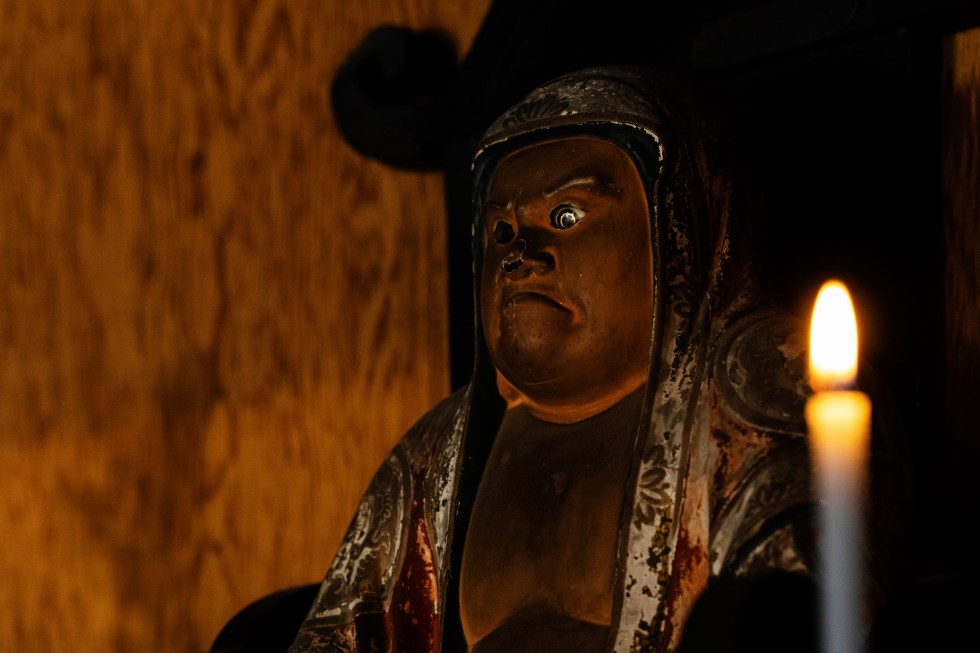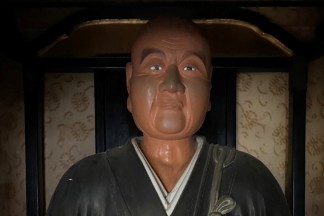/
GROUNDS
Teaching of Dogen Zenji
而今の山水は、古仏の道現成なり。
The mountains and rivers in front of us, at this moment are the very truths of the Buddha Dharma, transcending past, present, and future.【Shobogenzo- Sansui kyo (Mountains and Rivers Sutra) 】
Temple grounds
A large stone pillar inscribed with the “First Soto Zen monastery opened by Dogen Zenji" appears as you walk along the Uji River. After passing through the stone main gate and climbing up "Kotosaka," up to Buttokuyama and Asahiyama, you will see the Ryugu- style gate enshrined Buddha Shakyamuni on the top of the gate. The temple grounds with the traditional seven halls complex (Shichido-garan), the Dharma Hall (Hatto) at the center and the monks' hall (sodo) and living quarters are built symmetrically on both sides, creating a dignified atmosphere that visitors receive solemnity feeling.
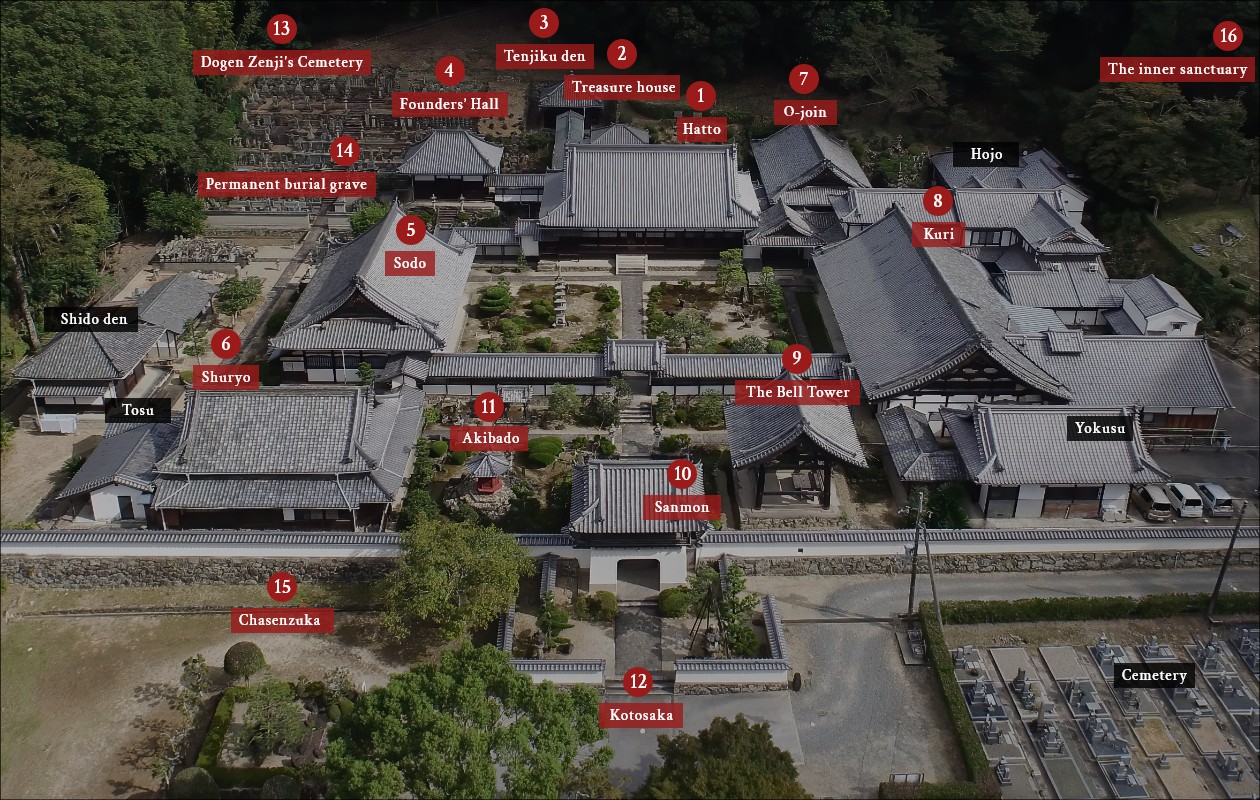
1
The Dharma Hall (Hatto)
The main building of the temple. The principal statue, Buddha Shakyamuni is enshrined in the center of the hall, with Monju Bosatsu (Manjusri Bodhisattva) and Fugen Bosatsu (Samantabhadra Bodhisattva) enshrined on both sides, as well as Bodhi-Daruma, Daigen shuri Bosatsu (Daigen Shuri Bodhisattva), and the sixteen arhats. The place where the abbot gives dharma talk and morning and evening services. It is said to have been built using the remains of Fushimi Castle, and there are many sights to see, such as the Uguisu-bari corridor (making sound as nightingale when walking upon) and the bloody ceiling. Junteido where enshrines Juntei Bodhisattva is behind of this hall.

- Buddha Shakyamuni
- Wooden, marquetry made. It was originally located in Jishoan, in Settsu Province, and was given to the lay founder, the Lord Nagai Naomasa. According to temple histories, it is said to be Dogen Zenji's creation.
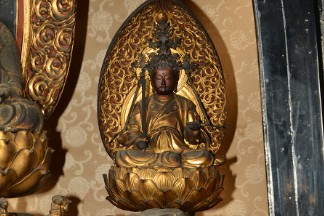
- Fugen Bosatsu (Fugen Bodhisattva)
- Fugen Bosatsu is accompanied to Buddha Sakyamuni, who leads those who practice with compassion, which is a deep sense of mercy and wisdom.
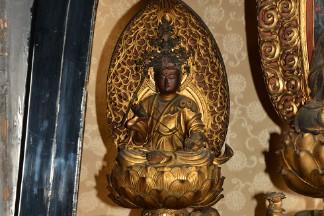
- Monju Bosatsu (Manjusri Bodhisattva)
- Monju Bosatsu, a widely known in Japanese proverbs, is said to govern the ability to cultivate wisdom and study, and tirelessly push forward the diligence and practice.
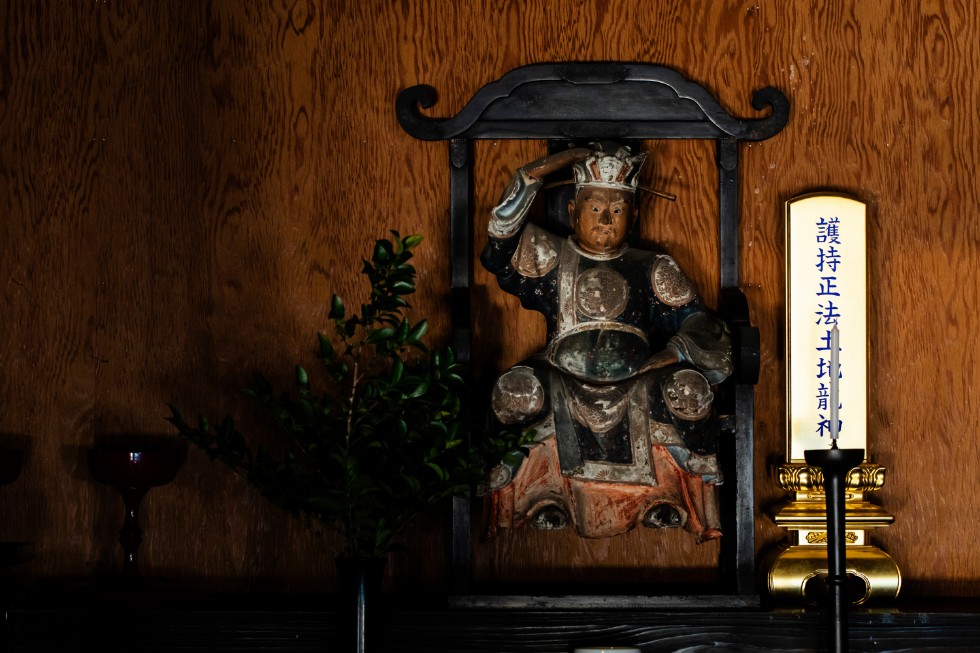
- Daigen Shuri Bosatsu (Daigen Shuri Bodhisattva)
- We enshrine as the guardian deity of the ground and the temple.
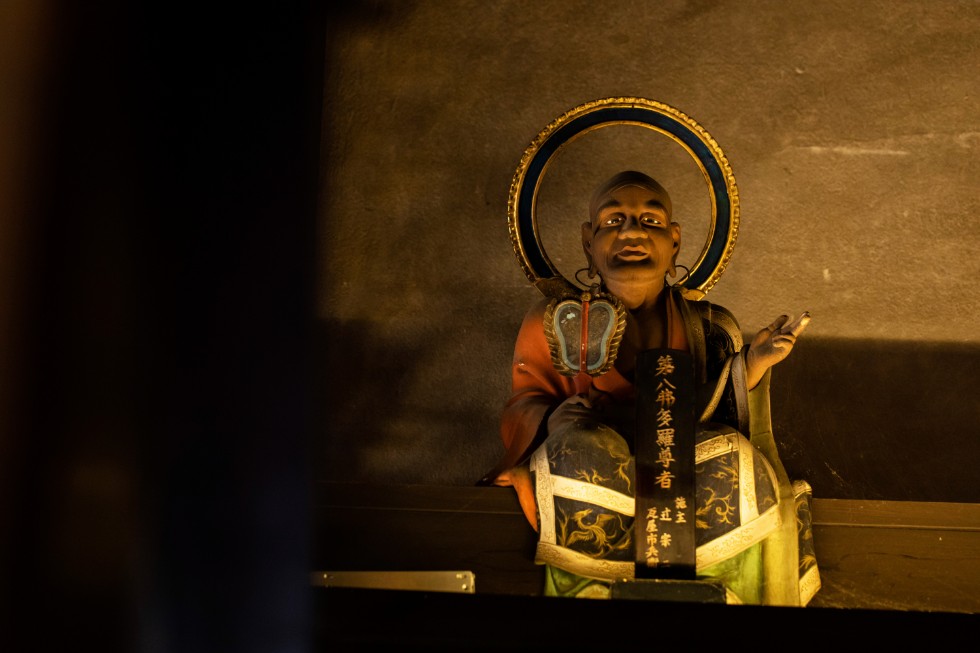
- The Sixteen Arhats
- The sixteen arhats, sixteen disciples of the Buddha who preserve and transmit Buddhism are enshrined.

- Junteido
- A paper image of Buddha made by a female in the Edo period. One-face and eighteen arms Juntei Kannon, which purifies the mind swiftly.
2
Treasure house
It is a designated tangible cultural property of Uji City. This statue is said to have been created by Ono no Takamura in the middle of the Heian period. It is also called "Tenarai kannon" because it is said to have been enshrined at the ancient place of "Tenarai" in the part of Uji jujo of the "Genji Monogatari (Tale of Genji)". The right foot thumb is slightly floating, signifying the intention to "immediately arrive to relieve the suffering of sentient beings. *Please open the door and come inside.
3
Tenjiku den
After Dogen Zenji went to Echizen on the recommendation of Hatano Yoshishige, the lord of Echizen, Koshoji was decimated by the Onin War (1467) and military fires. In 1633, Naomasa Nagai who settled as the lord of Yodo Castle, on a visit to the spiritual places in his domain, lamented the decline of Koshoji, founded by Dogen Zenji, he rebuilt the Ceremony hall, Ancestors’ Hall, Monks Hall, Kitchen facilities , Bell Tower and Gate of the temple on the present site with utilizing the remains of Fushimi Castle in 1648 to commemorate the memory of his parents.
4
Founders’ Hall
The Founders’ Hall enshrines Dogen Zenji, Ban-nan eiju, and successive abbots. This building was named "Robai-an" due to the Dogen Zenji's fondness for plum blossoms.
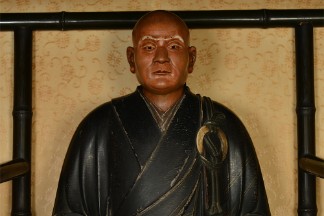
- A sitting statue of Dogen Zenji, the founder of the Soto Zen Buddhism
- Wooden made. In Kamakura period. The statue was placed in the Yoko-an and served day and night by Dogen's disciple, Sen-ne. Later, it was transferred to Kenninji, but on the occasion of the 500th memorial anniversary of Dogen Zenji, Koshoji received this statue. The statue is life-sized, seated on a bamboo chair, and stores the relics of Dogen Zenji inside.
5
Sodo (Monk’s Hall)
The fundamental place of practice where monks do zazen, sleep, wake up, and take meals. Monju Bosatsu (Manjusri Bodhisattva), characteristic seated statue with a face on the right side, and three-faced Daikokuten Statue, Daikokuten (Mahakla), Bishamonten (Vaisravana), and Benzaiten (Sarawati) are enshrined. In Sodo, we offer Zazen and sutra tracing experiences, services, and lectures.
6
Shuryo
Originally here is a study hall for monks to learn sutras and ancestral records, is now also used for workshops and sutra tracing sessions for Zen practitioners.
7
O-join
Built in 1912, this is the Shoin (literally "writing room") where Empress Teimei visited in June 1919. It is also a well-known spot for enjoying the view of the inner garden with its flowing waterfall, which was constructed by water taken from the Uji River.
8
Kuri
There are departments that takes care administrative work, reception, Handai-za (dining hall), and kitchen where meals prepared for the monks. The Zen temple's food guardian deity, Idasonten (Skanda), is enshrined here. Dogen Zenji's writing "Tenzo Kyokun" was written at Koshoji to instruct the Zen monk in charge of cooking.
Tosu/ Yokusu (Toilets, Bathroom)
In the monastery, sodo (monks' hall), the Tosu (Toilets) and Yokosu (bathroom) are regarded as important places for training as Sanmoku dojo (Three Silence Areas). This is one of the seven halls complex construction (Shichido garan).
9
The Bell Tower
The bell is engraved by Razan Hayashi, a Cheng-Zhu school (Neo-Confucian) scholar of the early Edo period, and is known as the "Kosho no Bansho (Kosho's Evening Bell)" one of the 12 most scenic spots in Uji.
10
Sanmon (Gate)
The Ryugumon (the gate of the Dragon castle style), which features a unique girdle, is a symbol of the wish that any trainee monk be able to achieve great success, as a dragon does.
11
Akibado
This hall enshrines Akiba Sanjakubo Daigongen, the guardian deity of Koshoji. Every January, Statue brought to the Dharma Hall (Hatto) and hold a Daihannya Kito (Prayer) services.
12
Kotosaka
It was named "Kotosaka" because the sound of the streams of water flowing on both sides of the slope sounded like the koto (Japanese harp). Fresh greenery and colored leaves are so beautiful, and the various faces in each season can be enjoyed, and it is one of the most representative places of Koshoji.
13
Dogen Zenji's Cemetery
The cemetery where the relics of Dogen Zenji are buried. On both sides are the egg-shaped stone statues of the Chuko abbot Ban-nan eiju and successive abbots, also on both sides are the Hokyo into style statues of the Nagai family's successive generations.
14
Permanent burial grave
We constructed the Permanent burial grave (Eitai Kuyo to) as one of the solutions to the concerns and succession problems related to the grave. Feel free to contact us to inquire about any type of request.
15
Chasenzuka (tomb for tea whisk)
This location is on the left at the top of Kotosaka. On the back of the monument, "抛筌(Hosen)" by Sen Soshitsu, the head of Urasenke school, and "謝茶(Shacha)" by Sen Sousa, the head of of Omotesenke school, are engraved on the Uji stone. Every year, during the Tea Festival in October, gratitude ceremony for tea whisks is held with visitors from all over the country.
16
The inner sanctuary “Asahiyama Kannon”
Behind Koshoji, there are Asahiyama (Mt. Asahi) and Buttokuyama (Mt. Buttoku), and the Kannon (bodhisattva) has long been enshrined at the top of Asahiyama. Next to the Kannon Hall, there is a grave of "Ujino wakiiratsuko," who is mentioned to in the "Kojiki" (Records of Ancient Matters). Panoramic view of Uji City can be enjoyed from the Daikichiyama (Buttokuyama) Observatory.

